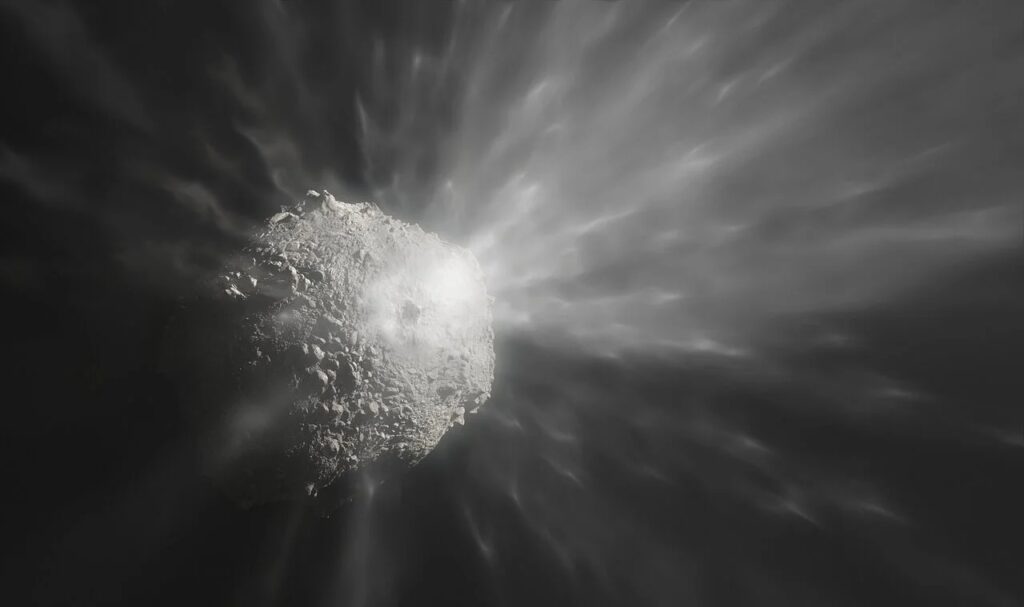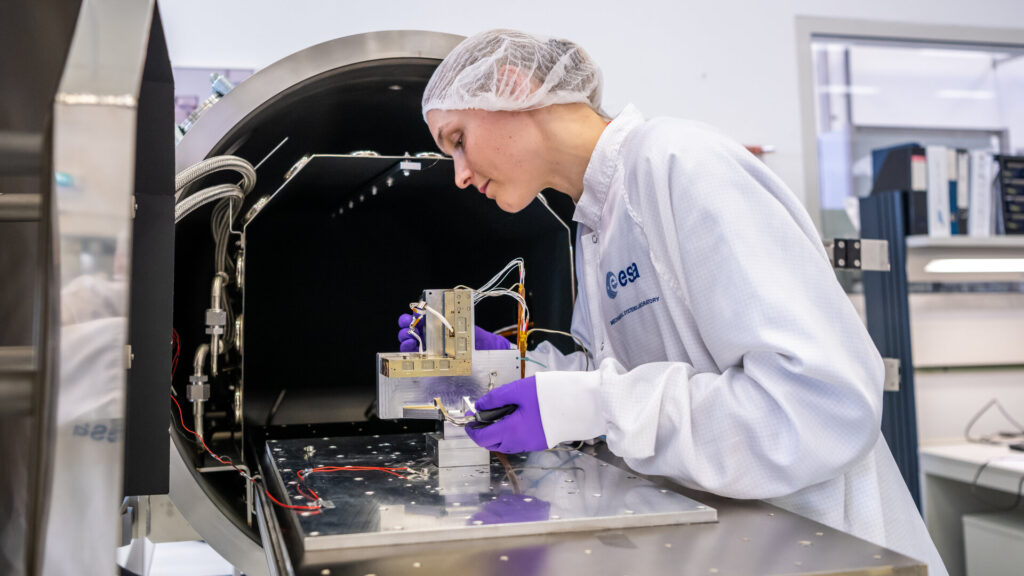The European Space Agency (ESA) conducted successful tests of the GRASS gravimeter. It is designed to measure the gravity of the asteroid Dimorphos.
Dimorphos Asteroid and Hera Mission
Last year, the NASA-created DART probe rammed the 160-meter asteroid Dimorphos; it is a moon of the larger asteroid Didymos. The purpose of the operation was to test the effectiveness of the kinetic strike technique for dealing with potentially dangerous celestial bodies.

The collision and its consequences were monitored both by a network of ground-based and space observatories, and by the LICIACube cubesat, which separated from DART. Its consequences exceeded the expectations of most scientists. The impact knocked out at least a thousand tons of matter from the surface of the Dimorphos, which led to a change in the orbital period of the small body by 32 minutes.
Of course, scientists would like to know more about how the collision with DART affected a couple of asteroids. They are also very interested in the crater left after the impact. Its study will help shed light on the internal structure of the Dimorphos and will provide an analysis of the matter from the depths of the asteroid.

This is where the Hera European mission comes into play. Within its framework, ESA will launch a probe that will go to Didymos and Dimorphos. After entering orbit around asteroids, Hera will release several cubesats. One of them is called Juventas. It will carry the GRASS gravimeter.
Technical design of the GRASS gravimeter
GRASS was constructed by specialists from the Royal Observatory of Belgium and the Spanish company EMXYS. It is designed to measure the gravity of the asteroid Dimorphos, which is smaller than Earth’s by more than a million times. Despite its small size and weight (it is only 330 grams), GRASS has a complex design consisting of two sets of thin blades that are fixed in cradles, both of which rotate continuously. The slightest movement of each blade changes its overall voltage and the surrounding walls. This capacitance-based measurement method gives the gravimeter a sensitivity equivalent to one micrometer — or a thousandth of a millimeter.

GRASS will be involved in the mission finale when Juventas descends to the surface of the Dimorphos. The gravimeter will have to record the moment of landing, all subsequent bounces, and then any shifts in surface gravity caused by the influence of the neighboring asteroid Didymos. It is expected that the collected GRASS data will determine the exact mass of the Dimorphos.
But before sending GRASS to asteroids, specialists needed to make sure that the instrument would withstand the conditions of flight in outer space and retain the ability to make measurements. For this purpose, the gravimeter underwent a series of tests in which it was subjected to vibrations similar to those that would occur during its launch, and then was placed in a vacuum chamber. GRASS successfully coped with all the tests. In the near future, the gravimeter will be placed at the disposal of specialists from the Luxembourg company GomSpace, who will install it on board the cubesat.

At the moment, the launch of the Hera mission is scheduled for October 2024. It will have to enter orbit around a pair of asteroids at the end of 2026.
According to https://www.esa.int
Follow us on Twitter to get the most interesting space news in time
https://twitter.com/ust_magazine

